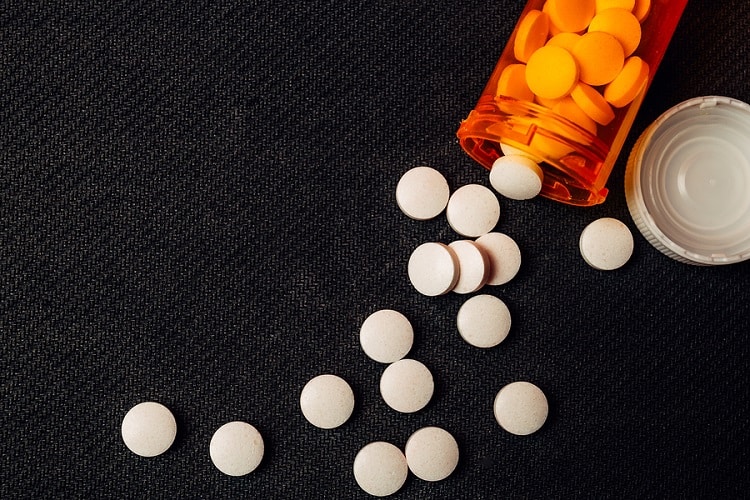“Today’s convictions mark the first successful prosecution of top pharmaceutical executives for crimes related to the illicit marketing and prescribing of opioids. Just as we would street-level drug dealers, we will hold pharmaceutical companies responsible for fueling the opioid epidemic by recklessly and illegally distributing these drugs, especially while conspiring to commit racketeering along the way.”~ Andrew Lelling, a top federal prosecutor in MassachusettsEarlier this month, a federal jury in Boston found top company executives of Insys Therapeutics guilty of racketeering and conspiracy charges related to the sale of Subsys, the powerful opioid painkiller that is their flagship product. Although this was a rare criminal prosecution of corporate officials, it is also a clear sign that the people who were most responsible for creating the nation’s opioid epidemic are finally being held accountable.After deliberating for more than two weeks after a ten-week trial, the jury issued guilty verdicts against John Kapoor, the billionaire founder and former CEO of Insys Therapeutics. Also convicted were four other top executives:
- Richard Simon, the former National Director of Sales
- Sunrise Lee, the former Regional Sales Director
- Joseph Rowan, also a former Regional Sales Director, and
- Michael Gurry, the former Vice President of Managed Markets
The charges carry a maximum penalty of 20 years in prison.
An Ongoing Legal Battle
“…(this is) a landmark prosecution that vindicated the public’s interest in staunching the flow of opioids into our homes and streets.”~ Andrew LellingThese criminal convictions are just the latest legal setback for the Arizona-based company.
- In September 2016, Jeffrey Pearlman, a former Regional Sales Manager, was arrested for conspiring to violate the anti-kickback law. Pearlman was responsible for Connecticut, New Jersey, New York, and Rhode Island.
- In December 2016, Michael Babich, the company’s former Chief Executive Officer who has been described as a protégé of Kapoor, was arrested and charged with conspiring to bribe doctors to prescribe Subsys.
- Simon, Lee, Rowan, Gurry, and Alec Burlakoff, Insys’ former head of sales, were also taken into custody at that time. (Kapoor was not arrested until October 2017.)
- In July 2017, Natalie Levine, a former sales representative for the company, plead guilty to her role in the kickback scheme.
- In August 2018, Insys agreed to pay $150 million to settle a Justice Department investigation, with possible future payments of an additional $75 million.
- Also in August 2018, Pearlman plead guilty.
- In November 2018, Burlakoff entered a guilty plea and agreed to cooperate with federal prosecutors in their case against Insys.
- In January of this year, Babich plead guilty to conspiracy, mail fraud, and scheming to bribe doctors to prescribe unneeded opioid medications.
What is Insys Therapeutics?
“ I hope that today’s charges send a clear message that we will continue to attack the opioid epidemic from all angles, whether it is Corporate greed or street-level dealing.”~ Carmen Ortiz, the US Attorney for the city of Boston, speaking in 2016Insys Therapeutics is an American pharmaceutical company originally founded in 1990 by Dr. John Kapoor, who originally came to the United States from India with a pharmacy degree from the Institute of Chemical Technology. In America, he attended the University of Buffalo and earned his Doctorate in Medicinal Chemistry in 1972.Insys is considered a specialty pharmaceutical company because it focuses on just a few products. In fact, right now, there are only two main products sold by the company, although there are several drugs that are in clinical trials right now.
- Subsys – a sublingualfentanyl spray
- Syndros – a synthetic formulation of THC, the active ingredient in marijuana. It has been FDA-approved to treat weight loss in people who have anorexia, AIDS, gastrointestinal illnesses, or chemotherapy-induced nausea and vomiting.
Among the drugs that Insys has in clinical trials are:
- Buprenorphine sublingual spray – for pain relief, not for opioid replacement therapy
- Naloxone sublingual spray – to reverse opioid overdoses
- Buprenorphine/naloxone sublingual spray – to ease symptoms of opioid withdrawal
In the wake of its ongoing legal issues, Insys is changing its business strategy. Instead of exclusively offering the Subsys painkiller, the company will expand their product line and focus on medications that are based on spray technologies.
What is Subsys?
“I think that this will send a message to other prosecutors that, look, these are cases that can be bought. If you have the evidence and you can put it before a jury, there’s hope you hold hose criminally responsible.”~ Michael Canty, a former federal prosecutor who now advises states on how to sue opioid manufacturersOriginally launched in 2012, Subsys is a sublingual spray typically given to cancer patients for the rapid relief of pain. The under-the-tongue spray formulation is specifically beneficial to patients who cannot swallow.However, Subsys is NOT approved for use in patients who don’t have cancer.Its primary ingredient is fentanyl, an extremely powerful and addictive synthetic opioid.Fentanyl is approximately 100 times more powerful than morphine, and some of its analogs are up to 10,000 times stronger. At that potency, a lethal amount can be measured in micrograms. In fact, a dose of fentanyl as small as six grains of salt is enough to kill a full-grown man. This also means that it may take multiple doses of the life-saving emergency medicationNarcan to reverse a fentanyl overdose.The Centers for Disease Control and Prevention reports that the rate of fatal drug overdoses involving fentanyl jumped sharply in recent years, rising approximately 113% every year from 2013 through 2016.Of special relevance, in 2016, 29% of ALL drug deaths involved fentanyl. Particularly significant to this case, since its approval in 2012 as a treatment for severe cancer pain, there have been over 900 drug deaths involving Subsys reported to the FDA.This is why fentanyl has surpassed heroin as the deadliest drug threat in the United States. More people are becoming aware of fentanyl’s dangers when it was revealed that it was involved in the deaths of musical legends Prince and Tom Petty.A 30-day supply of Subsys may cost up to $30,000. In 2016, Subsys generated $240 million in sales for Insys.
Bribing Doctors to Prescribe Subsys
“In many instances, the dinner programs were only attended by Alfonso and a sales representative for the drug manufacturer. In other instances, the programs were attended by individuals, including office staff and friends, who did not have licenses to prescribe controlled substances. For the majority of these dinner programs, Alfonso did not give any kind of presentation about the drug at all.”~ Deirdre M. Daly, US Attorney, speaking about Heather Alfonso, an Advanced Practice Registered Nurse (APRN), who was a paid speaker for InsysIn late 2017, Kapoor was arrested and charged with:
- Conspiracy to commit wire fraud
- RICO conspiracy
- Conspiracy to violate the anti-kickback law
- Conspiracy to defraud insurance providers
Ultimately, Kapoor and the other executives were convicted of conspiring to increase sales of Subsys by bribing doctors and by lying to insurance companies about patients’ need for the drug.One of Insys’ dubious tactics was to bribe prescribers by paying them for phony or fluff “speaking engagements”. In 2016 alone, Insys spent over two million dollars making 18000 payments to doctors around the country. And in some cases, those prescribers ended up breaking the law also.For example, in June 2015, APRN Heather Alfonso, plead guilty to accepting kickbacks to prescribe Subsys. In fact, Alfonso was identified as Connecticut’s highest prescriber of Schedule II drugs, and at one point, was among the top 10 prescribers in the United States.Most of her patients did NOT have cancer.The investigation found that Alfonso was paid to be a “speaker and consultant” at over 70 “dinner engagements”, at approximately $1000 per event.As the founder, Kapoor personally recruited doctors for the kickback scheme that included not only monetary payments, but also other perks, like fancy dinners at high-end restaurants. Doctors who received these payments and cushy gigs had a monthly quota. And these prescriptions were to be written at the minimum dose, so as to maximize the number of refills that could be billed to insurance companies.And when the doctors on the receiving end of these kickbacks failed to meet their quotas, the risked losing the lucre. For instance, Pearlman once contacted Alfonso to inform her that if she didn’t write more Subsys prescriptions, he was “going to have tremendous difficulty in justifying more (speaker) programs.”According to the indictment, this quota-and-kickback system caused the drug to be prescribed and refilled “without regard to the medical needs of…Subsys patients.”
The Opioid Epidemic in The United States
“My job responsibilities were to contact insurance companies on behalf of the patients and the doctors to get the medication approved by their insurance company…It was absolutely genius. It was wrong, but it was genius.”~ Patty Nixon, a former Insys sales representative-turned-whistleblowerEven a quick look at the statistics reveals just how serious the opioid crisis in America really is:
- 1999-2017: More than 700,000 drug deaths in the US
- To put that in perspective, that is more American lives lost than during World War I, World War II, the Korean War, the Vietnam War, Desert Storm, and the War in Iraq COMBINED.
- Just over two-thirds of deaths involved opioids.
- So during that single-generation time period, that means prescription painkillers, heroin, and other illicit opioids killed approximately 476,000 Americans.
- In 2017, it is estimated that there were over 72,000 fatal drug overdoses in this country.
- If that estimate is accurate, that would equate to nearly 50,000 opioid-related deaths, with almost 21,000specifically involving fentanyl.
Right now, fentanyl is driving the still-worsening drug crisis. For the past two decades, every year has set a tragic new record, in terms of the total number of overdose deaths. For example, in 1999, there were less than 17,000 fatal overdoses in this country. That means that within one generation, the number of drug deaths has spiked by well over 400%.
Big Pharma’s Role
“(Purdue Pharma) over-sold the benefits of opioid therapy for chronic non-malignant pain, while providing false reassurance about what the real risks are of addiction for patients taking opioids for chronic non-malignant pain.”~ Dr. Art Van Zee, M.D.This is far from the first time that a major drug manufacturer has been caught performing unethical and illegal acts, all in the name of boosting sales. In fact, Big Pharma malfeasance happens with startling regularity and directly contributed –and continues to contribute – to the drug problem.For example, among its products, Purdue Pharma makes OxyContin, MS Contin, Dilaudid, and other medications for pain management. Oxycontin is the single drug that is generally viewed as beingmost-responsible for creating the opioid epidemic. It was introduced in 1995 and heavily marketed as a safe and effective painkiller with little potential for abuse.But nothing could be further from the truth.
OxyContin Shows the Way
“We have in fact picked up references to abuse of our opioid products on the Internet.”~ Howard Udell, General Council for Purdue Pharma, in a 1999 memoIn reality, OxyContin was highly-addictive and was being abused at an alarming rate. OxyContin was described as, “…the hottest thing on the street – forget Vicodin.”And Purdue executives knew it.Yet they continued to aggressively market OxyContin, relentlessly targeting providers to get them to prescribe more and more of the drug. Among Purdue’s misdeeds:
- Misrepresenting the potential for dependence, abuse, addiction, and overdose
- Exaggerating the duration of pain relief
- Falsely claiming OxyContin was a safe and effective solution for chronic pain
- Intentionally burying reports and internal communications indicating that these positive claims were untrue.
- Directing sales representatives to make false or misleading claims.
- Failing to report doctors suspected of improperly prescribing their products.
- Donating huge sums of money to the American Academy of Pain Management, the American Pain Society, and the Federation of State Medical Boards, in a blatant attempt to influence prescribing guidelines.
These underhanded tactics worked. OxyContin has been an unparalleled success. In its first year on the market, OxyContin generated $49 million in sales for Purdue. But that number ballooned to $1.6 billion by 2002 and $3.1 billion by 2010. To date, OxyContin sales have totaled over $31 billion.By 2010, OxyContin controlled one-third of the prescription painkiller market.This unscrupulous-yet-profitable business model was not lost on other pharmaceutical companies – not just Insys, but also:
- Allergan
- Amerisource Bergen
- Cardinal Health
- Cephalon
- Endo Health Solutions
- Janssen Pharmaceuticals
- Johnson & Johnson
- McKesson
- Teva Pharmaceutical Industries
Even pharmacies and distributors disregarded guidelines for the sake of higher profits. This is exactly why CVS, Walgreens, Walmart, and others have been named in many of the lawsuits happening right now.
Lawsuits against Big Pharma
“…(the) lawsuit alleges that the drug companies engaged in fraudulent marketing regarding the risks and benefits of prescription opioids… We believe that the evidence will show that these pharmaceutical companies purposely misled doctors about the dangers connected with pain meds that they produced, and that they did so for the purpose of increasing sales. And boy, did they increase sales.”~ Mike DeWine, Ohio Attorney GeneralCurrently, there are dozens of pending lawsuits that have been filed by individual cities, counties, and states, alleging that Big Pharma companies purposefully misled both health care providers and the public about the dangers of prescription opioid pain medications, and then followed up with overly-aggressive marketing. Some of the more common grievances are:
- Minimizing the potential for abuse and addiction.
- Overstating the effectiveness of the drugs, in terms of both pain relief and duration.
- Providing incentives – bonuses, kickbacks, and other perks – to doctors who meet opioid prescribing quotas.
- Punishing those providers who did not meet those quotas by withholding bonuses and discontinuing incentive programs.
- Urging doctors to regard pain as another vital sign.
Every American community negatively impacted by the opioid epidemic has a legitimate claim to file a grievance with the drug manufacturers and distributors who played a role – from the Cherokee Nation in Oklahomato individual cities to whole states.Recently, a coalition of 41 State Attorney Generals was organized to more fully explore allegations of unethical business practices by Big Pharma companies. In other words, we just may be seeing the tip of the legal iceberg.In some instances, the plaintiffs have banded together to show a pattern of corporate misconduct. For example, in Cleveland, 1600 individual cities, counties, and Native American tribes have filed claims that have been consolidated into one enormous lawsuit.As Pete Holmes, Seattle’s City Attorney, says that he stands together with those who are “fighting for justice for patients who were prescribed opioids and became addicted, because they were not irresponsible; they were deceived. Addiction to opioids and heroin does not stop at Seattle’s city limits. This is the city’s problem, the state’s problem, and everyone’s problem.”
Karma for Big Pharma
“Reducing the number of excess tablets won’t end the epidemic, but we believe it will help rein in the problem.”~ Purdue PharmaThese criminal convictions are just another example of how the tide is turning in America. Now that the truth is finally coming to light about the deception and corruption practiced by Big Pharma drug companies and how this contributed to the opioid crisis, steps have been and are being taken to keep this from worsening or ever happening again:
- Prescription Monitoring Programs (PMPs)
- Provider and patient education
- New prescribing guidelines
- Improved pain management strategies
- Medications for opioid addiction
But just as important, these lawsuits and fines are hitting these companies right where it really hurts –in the bottom line. And if past judgments from the similar lawsuits filed against Big Tobacco companies are an accurate precedent, future settlements will be in the BILLIONS.Look at what has already happened besides the $150 to $225 million coming from Insys, look at what else has already happened:
- Purdue Pharma (2007): $601 million
- Purdue Pharma (2019): $270 million
- McKesson (2019): $37 million
Some of this money will be used to fund education, prevention, and opioid addiction treatment programs, and some will be used to pay for research into safer, non-opioid pain management. This will help people who are already addicted to opioids AND prevent the next generation of addicts.This is already having an effect on Big Pharma companies. Purdue, Janssen, and Allegan have each announced that they will no longer promote or market their prescription opioid products. As a result, Purdue laid off over half of its sales force.Insys and Purdue are each reportedly exploring bankruptcy.
What This Means to You
“It has become increasingly clear that opioids carry substantial risk but only uncertain benefits – especially compared with other treatments for chronic pain. We lose sight of the fact that the prescription opioids are just as addictive as heroin.”~ Dr. Thomas Frieden, Director of the Centers for Disease Control and PreventionWithin all of the information that has come to light from these lawsuits is one is extremely important fact – opioid addiction can happen to ANYONE, even someone who has prescribed a painkiller for a legitimate medical condition and who takes that medication exactly as prescribed.Although patients should always educate themselves about any drugs they are prescribed, that education becomes more difficult when the manufacturers and distributors engage in a campaign of deliberate deception and fraud. That makes it that much harder to find out vitally-needed accurate information.But the worst part is these deceptive practices also undermine the necessary trust between doctors and patients. Although these lawsuits are highlighting the unfortunate reality of problem prescribers, the fact is most physicians were also fooled into thinking that opioid painkillers are much safer than they actually are.Even Dr. Herschel Jick, whose letter was quoted out-of-context thousands of times by pharmaceutical sales representatives as “proof” of how safe opioid painkillers really are, reflects and has this to say:““The letter wasn’t of value to health and medicine in and of itself. So, if I could take it back — if I knew then what I know now, I would never have published it. It wasn’t worth it.”If you or someone you care about is struggling with a dependence on or addiction to prescription painkillers,click HERE to get immediate help.




